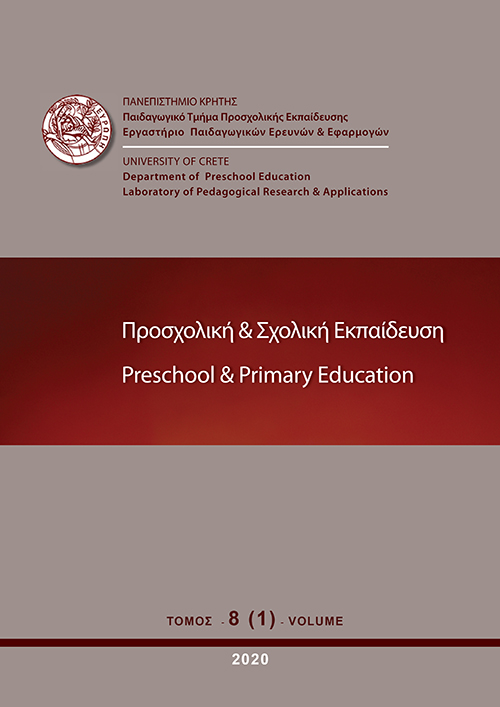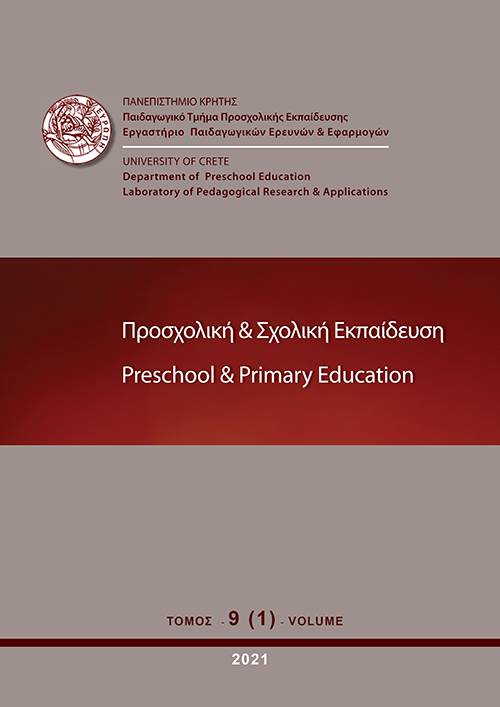Intervention for a Visual Attention Span Processing Deficit in a Greek-Speaking Child with Slow Reading Speed
Περίληψη
We present the case of TN, aged 9;11, a monolingual Greek-speaking girl with accurate but slow word and non-word reading. Neuropsychological assessment revealed a selective deficit in visual attention (VA) span tasks. TN had previously taken part in a spelling intervention targeting whole word processing and, although her spelling improved, at the end of the programme her reading remained slow. In the present study, we assessed TN in a lexical decision task with semantic primes, and she showed reduced semantic priming in relation to typically developing readers. TN took part in an intervention aimed at mitigating the VA span processing deficit and similar to a programme previously conducted with a twelve-year-old Greek-speaking boy, RF ([author(s)], 2013). Post-test results for TN revealed a significant improvement in letter report ability as well a reduction in word reading latencies; semantic facilitation was also observed in the priming task following the intervention, although differences were not significant. The results indicate, in line with previous research, an association between visual attention span and reading speed.
Λεπτομέρειες άρθρου
- Πώς να δημιουργήσετε Αναφορές
-
Niolaki, G., Terzopoulos, A., & Masterson, J. (2020). Intervention for a Visual Attention Span Processing Deficit in a Greek-Speaking Child with Slow Reading Speed. Preschool and Primary Education, 8(1), 1–30. https://doi.org/10.12681/ppej.21181
- Τεύχος
- Τόμ. 8 Αρ. 1 (2020)
- Ενότητα
- Άρθρα

Αυτή η εργασία είναι αδειοδοτημένη υπό το CC Αναφορά Δημιουργού – Μη Εμπορική Χρήση – Παρόμοια Διανομή 4.0.
Οι συγγραφείς των άρθρων που δημοσιεύονται στο ΠΡΟΣΧΟΛΙΚΗ & ΣΧΟΛΙΚΗ ΕΚΠΑΙΔΕΥΣΗ διατηρούν τα δικαιώματα πνευματικής ιδιοκτησίας επί των άρθρων τους, δίνοντας στο περιοδικό το δικαίωμα της πρώτης δημοσίευσης. Άρθρα που δημοσιεύονται στο ΠΡΟΣΧΟΛΙΚΗ & ΣΧΟΛΙΚΗ ΕΚΠΑΙΔΕΥΣΗ διατίθενται με άδεια Creative Commons 3.0 και σύμφωνα με την άδεια μπορούν να χρησιμοποιούνται ελεύθερα, με αναφορά στο/στη συγγραφέα και στην πρώτη δημοσίευση για μη κερδοσκοπικούς σκοπούς και με δικαίωμα τροποποίησης μόνον με παρόμοια διανομή (αν αναμείξετε, τροποποιήσετε, ή δημιουργήσετε πάνω στο υλικό, πρέπει να διανείμετε τις δικές σας συνεισφορές υπό την ίδια άδεια όπως και το πρωτότυπο). To Εργαστήριο Παιδαγωγικών Ερευνών και Εφαρμογών του Παιδαγωγικού Τμήματος Προσχολικής Εκπαίδευσης του Πανεπιστημίου Κρήτης και το Εθνικό Κέντρο Τεκμηρίωσης διατηρούν το δικαίωμα να δημοσιεύουν, να αναπαραγάγουν, να παρουσιάζουν στο κοινό, να διανέμουν και χρησιμοποιούν άρθρα που δημοσιεύονται στο ΠΡΟΣΧΟΛΙΚΗ & ΣΧΟΛΙΚΗ ΕΚΠΑΙΔΕΥΣΗ σε οποιοδήποτε μέσο και μορφή είτε μεμονωμένα είτε ως μέρη συλλογικών έργων, για όλο το χρόνο διάρκειας προστασίας της πνευματικής ιδιοκτησίας και για όλες τις χώρες του κόσμου. Αυτό περιλαμβάνει ενδεικτικά και όχι αποκλειστικά, το δικαίωμα δημοσίευσης των άρθρων σε τεύχη του περιοδικού ΠΡΟΣΧΟΛΙΚΗ & ΣΧΟΛΙΚΗ ΕΚΠΑΙΔΕΥΣΗ, αναπαραγωγής και διανομής μεμονωμένων αντιγράφων των άρθρων, αναπαραγωγής ολόκληρων των άρθρων σε άλλη έκδοση του Εργαστηρίου Παιδαγωγικών Ερευνών και Εφαρμογών του Παιδαγωγικού Τμήματος Προσχολικής Εκπαίδευσης του Πανεπιστημίου Κρήτης και του Εθνικού Κέντρου Τεκμηρίωσης και αναπαραγωγής και διανομής των άρθρων ή περίληψης αυτών με χρήση πληροφορικού συστήματος αποθετηρίου.




